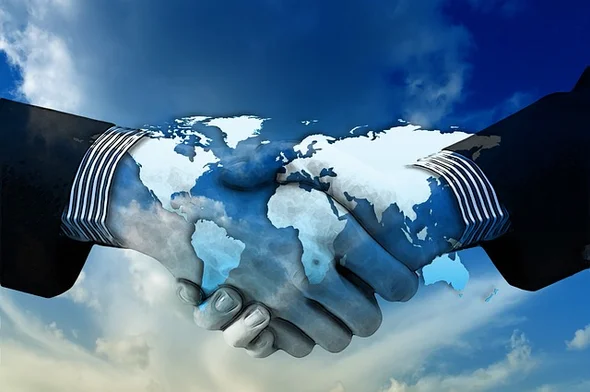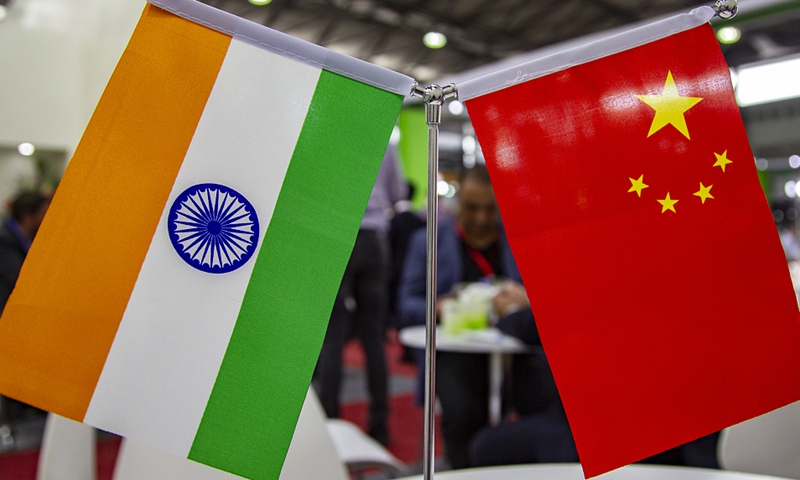Which Economies Are Set To Be The World’s Top 2 Economies – India or China? Has Narendra Modi Truly Transformed India?
The United States and the European economies have perhaps never seen such gloomy prospects and predictions as it is poised for in the current times.

A recent study on China and Indian economies predicts that both countries have an excellent chance of becoming leading economies in the coming decades.
It also predicts a slow but steady decline in the United States and Western Europe economies.
The analysis and the conclusion derived are the basis of productivity growth and demographics, which include the United States immigration policy, China’s less dependency and moving away from the free market and some other vital factors that will all have an impact on the future influence of nations in the global economy.
While it may be true that a new era is on the horizon, as the old world order is being given a tough challenge by both China and India, the research paper – by the National Bureau of Economic Research NBER titled – “The Future of Global Economic Power,” the authors predict a rise of China and India in the global economic strength.
It predicts –
- The U.S. share of world GDP, the gross domestic product, will reduce from 16% in 2017 to 12% by 2100.
- China‘s share will likely rise from 16% in 2017 to 27% by 2100.
- The study predicts India’s share of world GDP to increase from 7% in 2017 to 16% in 2100,
- While Western Europe’s share (including the U.K.) will reduce from 17% in 2017 to 12% in 2100.
- The converged GDP of India and China will increase from 23% in 2017 to 43% in 2100.
The India Economy Outshines
Regarding the global economy, India has been a shining star enjoying an estimated 7 per cent growth rate this year – 2022, even as the majority of the rest of the world is toiling with energy and financial crises.
But in comparison to China, India has been considered a bit of a letdown for failing to keep up with the growth of China, India’s assumptive future world power.
If we were to compare the above statistics as predicted, it is clear that China is likely to outshine India.

With his coming to power Narendra Modi promised to change India’s reputation; however, his record is met with mixed sentiments.
The questions thus are –
1. Why is India not able to outshine China in recent decades?
2. Why is India never known as a manufacturing powerhouse compared to China? And finally,
3. What kind of economic policymaker has Modi proved to be?
Now, let us get to the bottom of this comparison, for it has become a cliche that when we talk about India, we also talk about China and vice versa.
However, economists the world over agree to the fact that when we talk about the future of the world economy, it is the east that will dominate.
At the same time, there is a general sense that India’s economy has never really taken off when compared to the Chinese economy; it has done well in spurs but not consistently.
While China set out between 1980 – 2010, India was struggling.
So what is holding us back? Is it democracy in India as opposed to China’s political system?
The facts are this –
India and China are both gigantic countries, with each having a sixth of the world’s population, yet that is where the similarity ends.
With the way that the Chinese economy catapulted, it would be safe to say that no economy of any country has grown the way China has.
China has done spectacularly well; India, on the other hand in comparison, is still haunted by extreme poverty in very substantial parts of India’s population.
China has been able to tackle this, with its population no longer affected by extreme poverty.

So, where did India falter?
By the 1980s, when the World Bank first got access to China, what they saw in China was a developing country with still low a lower per capita GDP, not much higher than India’s, but set for growth because of China’s policies.
By the early 1980s, China could be compared to a lower-income, but advanced economy like Italy since China had introduced universal elementary education enrollment, life expectancy numbers and health provisions more like those of a lower-income advanced economy.
On the other hand, in the 1980s, India was still struggling with a lot of internal issues which were centrally focused on politics and not the social reform of the population.
India has always faced the problem of unleashing the full potential of a popular revolution that would have genuinely upheaved the social structure and transformed it, which might have challenged the caste system directly.
India in the present
Modi has been in term for a while and ran on an ambitious platform to remake the Indian economy.
Therefore it is legitimate to ask how his record is. What kind of policymaker has he been, and has he kept his promises?
Now this will be interesting –
Modi has three-point sides to his work –
A Complex high-level reform that the Modi government has set in motion.
And then comes the BJP party that Modi belongs to; also, there is a network that links the prime minister to prominent and key Indian business interests.
However, the most remarkable thing one notices is that since the time of Modi’s term, India’s growth has truly begun.

The fundamental changes that one sees in India are these –
A roll-out of a comprehensive set of national programs which tie ordinary Indian citizens into a national ID system, the national financial system, and the national cellphone system.
The combination of the above three has translated into a highly advanced electronic ID system linked to people’s cell phones, with 1.2 billion cellphone licenses in India.
In India, practically everyone has access to one. And suddenly, we’ve got a mechanism for delivering welfare payments to everybody in India at the switch of a button.
Indian Economy
Our second question is, where does manufacturing fit in India’s economy? Did we miss the boat when it comes to manufacturing, or did we jump straight to services?
This is a crucial question to ask when we make an India-China comparison.
This is where the difference between India and China crops up. Between the two economies from the ’80s onwards, China began to develop as a critical hub for global manufacturing, with leading investment by Western companies and Japanese, South Korean, and Taiwanese companies.
They all went to China and turned it into a giant factory of the world.
And China thus grabbed the opportunity that India could have gained.
As China has developed, it no longer remains a low-cost manufacturing hub and the slots beneath were taken by countries like Vietnam and Bangladesh.
So why did the manufacturing hub not happen in India?

Tech and Service Industry – India
However, what India has yet to be able to achieve in manufacturing, it has in Tech and Service industry.
We now have the highest number of Indian CEOs of major international companies. What exactly accounts for Indians’ success in corporate leadership, although these companies are often not in India themselves?
We have an incredible list of Indians running – Google, Microsoft, Adobe, IBM, Chanel, Bata, and so on.
Tech features very prominently in India, and we have almost 60 CEOs of Fortune 500 companies of Indian origin.
Firstly, our population- one-sixth of humanity is Indian. So, that’s broadly one-sixth of the CEOs of Fortune 500 companies.
Our education system at the elite level is competitive with just about anywhere in the world. Perhaps not in terms of Indian universities, but we have a pipeline of people who make it into the top tier of Western universities, which are the entry tickets to those kinds of jobs. And so, yes, we should not be surprised.
India’s population
India’s share of the global economy may rise from 6.8% to 33.8%. By the exact statistics, it would mean a rise in China’s share of world GDP from 15.7% to 22%.
Still, India’s economy would be 50% bigger than China’s under this scenario because its population would be 50% larger than China’s but with the same labour productivity.
Conclusion: Compared to India and China, all other major economies may witness their economic influence shrink or stay roughly fixed.
For the U.S., the picture is particularly bleak. Its share of the world economy may reduce to just 10% by Century’s end.
The story for Western Europe, including the U.K., is even more shocking – it will be just 6.4%.
This translates to Western Europe evolving from being the world’s largest economy to one of the smallest.




